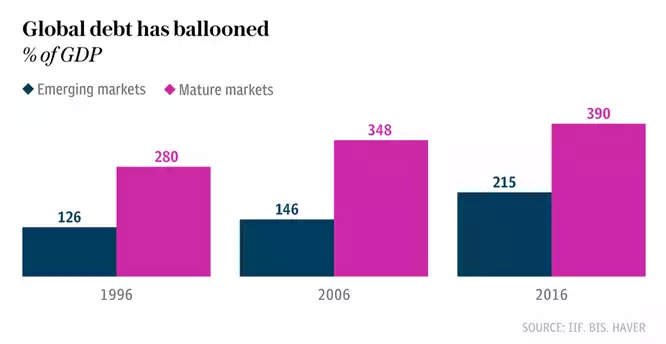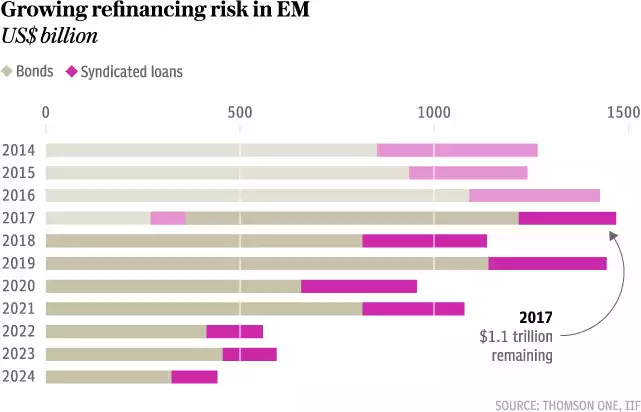IIF - “Eye Watering” Global Debt Explosion
News
|
Posted 10/04/2017
|
5249
Last week London’s The Telegraph reported on the latest global debt assessment by the Institute of International Finance (IIF), the world’s top financial institutions’ industry body. They describe the US$70 trillion growth of debt over the last decade as “eye watering” reaching an unprecedented US$215 trillion. That number in itself (whilst mindbogglingly big) is somewhat meaningless until you put it against GDP (income) where it equates to 325% of global GDP. So for the mathematically challenged, there is 3 ¼ times more debt than ‘income’….
There is particular concern around Emerging Economies or Markets (EM). As you can see from the graph below, EM’s have seen the sharpest increase, or as they describe it a “spectacular rise” to $55 trillion or 215% of GDP with debt rising more than 340% in just the last decade.

Whilst that alone is a concerning number, it is the global context that makes it all the more scary. A lot of this debt is USD or other foreign denominated debt and rates are on the rise, increasing the service cost. This year in particular also sees an enormous amount of that debt due for refinancing within that strong USD, rising rate environment, representing a massive systemic risk.

As they conclude:
“While the global economy appears to be turning a corner, the Fund said there was a risk that low growth, high debt and weak banks could push the world in a dangerous direction.
It said the "sheer size of debt could set the stage for an unprecedented private deleveraging process that could thwart the fragile economic recovery".”
That, coming from a body representing all the major banks, is as close as you will hear a description of a crash they would make. 2017 looks like it could be very very interesting….
Oh and by the way… as we warned in last week’s Weekly Wrap, the ISM survey was spot on and the US non farm payrolls employment print on Friday night was an absolute shocker. Against expectations of 180,000 new jobs, only 98,000 materialised (lowest since May 2016) and those big Jan and Feb numbers were quietly revised down by 38,000 and, yet again, average hourly earnings was weak at just 0.2%. That is the economy ‘turning a corner’?